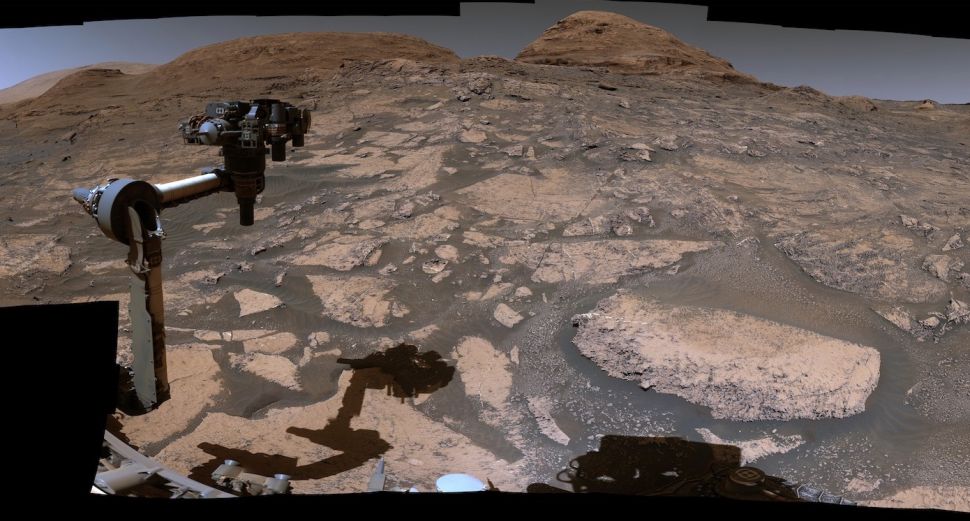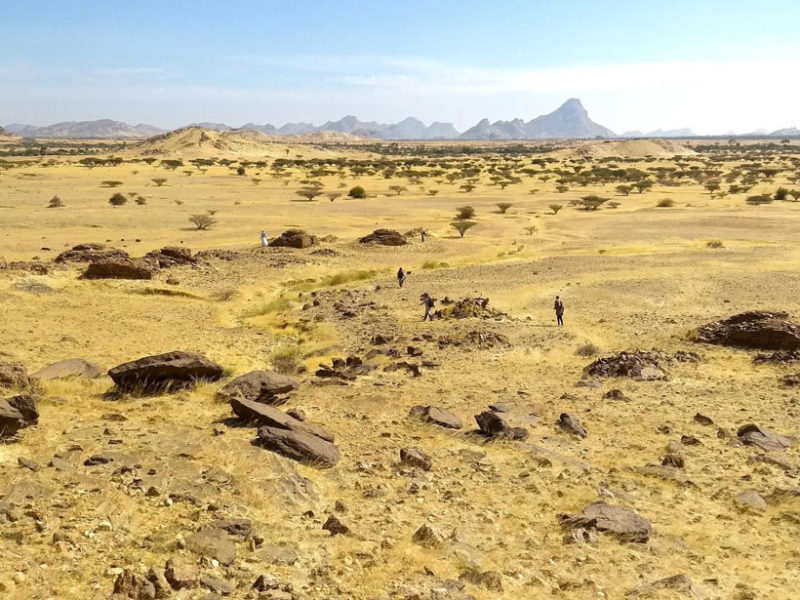New research has pinpointed small, violent faults caused by the breakup of an ancient supercontinent as the potential cause of a major loss in the rock record of the Grand Canyon, known as the Great Unconformity. Plus, using sky mapping tools to find earthly tombs and a review of Andy Weir’s “Project Hail Mary.”
Podcast
Transcript
Hello and welcome to the Daily Space. I am your host Dr. Pamela Gay, and I am here to put science in your brain.
When a NASA engineer tells you something they built will last at least thirty days, I’ve come to believe you need to ask them to define “at least.” I’m starting to think they mean “we expect it to last much much longer than this, but the design spec said to make it last thirty days.”

The Ingenuity helicopter on Mars was deployed on its thirty-day mission on April 3 and made its first flight on April 19. That was 132 days ago. It is currently preparing for its twelfth flight and has taken the point position in its exploration team, as it scouts out the terrain for its partner explorer, the Perseverance rover. With its rotor, Ingenuity is showing it fears no sand as it flits over dunes and explores terrain that would be hazardous to a rover. It has even captured cool landscape shots that include Percy. We have links to all of these images on our website, DailySpace.org.
Ingenuity’s twelfth flight will fly along Perseverance’s intended path, taking images that are slightly offset as it flies out and back. These pairs of image tracks will allow the mission team to create 3D views of the landscape; views that will make it possible to better define a safe drive path for the rover that intersects as much awesome science as possible.
This represents an awesome potential future where rovers and helicopters explore Mars together in the ultimate buddy story.
Mars is the only world in our solar system occupied solely by a colony of smart robots. Most of the explorers are journeying alone, hoping to find evidence of current or past microbial life while they explore the landscape and atmosphere looking for data on the red planet’s ecological history.

The Mars Science Laboratory, Curiosity, put down wheels in Gale Crater, a region that appears to have once contained a lake. For the past several years, it has investigated the clay-rich rocks that make up the base of the crater, but recently, as it ascends Mount Sharp, it is seeing its landscape change. According to deputy project scientist Abigail Fraeman: We’re entering a region where rocks are filled with salty minerals called sulfates. These minerals form in drier conditions, so we think this area might show us how the ancient Martian climate was changing.
As Curiosity climbs, it will be ascending through land that dried out at different times. Each layer, like the layers in a canyon, will reveal a bit more of Mars’ past and help us better understand what to expect in Mars’ future.
It took humans a long time to realize we live in a constantly changing universe. The inability to see the day-to-day changes in most objects using just our eyes led to the false notion that the stars and planets were immutable, essentially glowing lights on rotating spheres. When things did change, it was seen as a portent of either great or evil things to come.

Comets, for instance, were seen as great harbingers of whatever was useful to those in power at the moment. Now, we know that comets are giant iceballs that are orbiting the Sun on highly elliptical paths. As they approach the Sun and heat up, some of their material will transform from solid to gas, creating the dramatic tails we see in books but rarely with our eyes. As they pass near the Sun, like a snowball on a clear day, they get heated up and can fall apart.
In the spring of 2020, as we all desperately looked for some small piece of happiness, Comet ATLAS C/2019 Y4 promised us an amazing light show and one of those naked-eye visible tails. We didn’t really get that. Instead, C/2019 Y4 just crumbled apart while still far from the Sun.
Why a perfectly healthy-looking comet would self-destruct was a bit of a mystery and in the past year, researchers have looked at a lot of different factors to try and figure out what went wrong.
In looking at its orbit, it was realized the comet’s path was identical to that of an early comet that passed through in 1844. This kind of “two comets, one orbit” situation can arise when a large object shatters, and the remaining pieces get spread out along the path. We saw this in great detail in 1994 when Comet Shoemaker/Levy 9 flew into Jupiter, and there are other families of comets believed to all be remains of a single object that broke apart. If C/2019 Y4 was just a fragment of some other body, that fragment might have inconsistent strength, causing it to fragment.
It’s also possible it had an area of super-volatile ices that exploded like fireworks, blasting it apart, or maybe even just setting it catastrophically spinning. It’s unclear. In 5000 years, its sibling comet will be back, and we’re just going to have to see what we can learn from it. That, however, is one story I don’t think we’ll bring you here.
Five thousand years for a cometary orbit may seem like a long time, but it’s a blink of the eye, geologically speaking. Sure, we may not be able to see that sister comet when it comes back because we will be long gone, but our descendants might be able to. And just as we can’t see the Colorado River cutting through the Colorado Plateau as it happened, we can see the evidence in the rock records of the Grand Canyon.
Rocks, after all, even cometary ones, record a lot of history.
What do we do when we are literally missing some of that history? Well, if you’re a geologist, you try to solve the why of the missing rock. And in the Grand Canyon, there are areas where more than a billion years’ worth of rock is missing. Of course, we know erosion is a factor, but a billion years is a very long time, even geologically speaking, and we want to know what caused all that rock to disappear.

Let me lay this out for you all, so to speak. The basement rocks of the Grand Canyon, the rocks that are the oldest and sit at the bottom, are between 1.4 and 1.8 billion years old. However, at the western end near Lake Mead, the rocks sitting right on top of that basement rock are only 520 million years old. That’s a significant chunk of the geological record missing.
This section of missing rock is called the Great Unconformity, and it exists not just in the Grand Canyon but also in other locations of North America. That makes it even more important to understand. And now a team from the University of Colorado Boulder has published a paper in the journal Geology that provides a theory for what happened to make all that rock disappear.
Per the press release: The team reports that a series of small yet violent faulting events may have rocked the region during the breakup of an ancient supercontinent called Rodinia. The resulting havoc likely tore up the earth around the canyon, causing rocks and sediment to wash away and into the ocean.
The method the team used is called “thermochronology,” and it’s used to track the record of heat in rock. When rock formations are buried, the pressure on top causes them to heat up. In some instances, the intense heat and pressure can cause deformations of the rock, and those deformations can change the chemistry of the minerals.
And what they found was that the temperature changes were all over the place in different parts of the Canyon. The western basement rock rose to the surface about 700 million years ago, while the eastern half was buried under kilometers of sediment. That’s where the breakup of Rodinia comes in. As that supercontinent began to pull apart, it caused major upheavals and possibly uplifted different portions of the Grand Canyon at different times. This uplifting may have caused overlying rocks to crumble and fall down into the Colorado River, wiping them out of the geologic record altogether.
In exploring the Grand Canyon, Barra Peak, graduate student and lead author of the new study, notes: There are beautiful lines. At the bottom, you can see very clearly that there are rocks that have been pushed together. Their layers are vertical. Then there’s a cutoff, and above that, you have these beautiful horizontal layers that form the buttes and peaks that you associate with the Grand Canyon.
The research team now intends to expand their research to other sites of the Great Unconformity and continue piecing together the disappearance of the rocks.
There are a lot of mathematical relationships that crop up over and over in the universe. We see the same golden ratio occurring in the structures of romanesco broccoli and grand spiral galaxies. Bell curves can describe the heights of humans and the variance of stars about some average value. Over and over, patterns exist everywhere.

But some patterns are utterly unexpected.
The same statistical method of clustering points that is used to identify clusters of galaxies can also be used to find clusters of tombs in the desert. That is math I never expected.
High-resolution satellite imagery has revealed myriad structures in the desert of eastern Sudan that appear to be ancient tombs. Ph.D. student Stefano Costanzo was working to map and understand these hard-to-reach funerary structures, which are located outside the city of Kassala (and by outside Kassala, I mean Costanzo would drive down the single road that led toward ruins, and then go another 5 hours off-road to get there).
In looking at the distribution of structures, Costanzo noted that they appeared to cluster, but the clusters didn’t seem to be purely related to differences in terrain that might have made one place easier to build in than another.
Collaborator Filippo Brandolini explored different statistical methods for understanding clustering in data and found that the Neyman-Scott cluster process, which was designed for galaxy clusters, worked to describe what they were seeing. According to Costanzo, “…a sort of gravitational attraction, which is actually socio-cultural”, is pulling these structures together.
This study shows that we really can’t know how the results of our research may help define other fields of study. Wi-Fi was developed by astronomers trying to improve radio astronomy, and data compression techniques have been created to help spacecraft get their signals home. In writing our grants to the National Science Foundation, researchers like me have to explain how our research will benefit society, and the thing that always gets me is the greatest benefits are rarely the ones we expect.
Review
Science can be learned in a lot of unexpected ways. As an undergrad, I once aced an exam because instead of doing my planned studying, I watched Star Trek: The Next Generation, and it happened to be an episode where Data explained some science concepts in great detail that I wasn’t planning to study but that did turn out to be on the exam.

Science fiction is something I turn to both to escape our current world and to see how technologies might get combined in some future where money is no option and space exploration is real. In his freshman novel, The Martian, author Andy Weir imagined the fate of an astronaut accidentally stranded on the red planet, and with shocking levels of scientific rigor, explained just how such a human might survive. Weir has since gone on to author Artemis and now, Project Hail Mary.
The scientists in this near-future novel discover that something is eating away at the Sun and will destroy our world if the process can’t be reversed. In an attempt to save humanity, a desperate mission is launched that leaves one man, Ryland Grace, abandoned without his memories light-years away in a spacecraft that contains tools, computers, and two dead colleagues. Somehow, he has to figure out who he is, and how to save our distant world.
Project Hail Mary employs a storytelling method that leaps the reader back and forth between our hero’s current struggles in a distant star system and the months of events on Earth that led to his journey. This disjointed timeline brings drama to the return of his memory and links together how every decision of the past directly affects the future.
Like The Martian, Project Hail Mary shows our lonely hero as a problem solver, and everyday physics plays a supporting role in the plot. Beyond just talking about science, this novel also gets into the culture and politics of science and how the skills and intelligence of a researcher don’t always matter as much as the popularity of their ideas.
There is also a subplot I can’t get into without creating spoilers. The publisher’s summary simply says: Thanks to an unexpected ally, he might have a chance.” And I dare say no more than that. Just know your emotions will be tugged on as Andy Weir helps you understand there is no such thing as “uniquely human.”
The audio version of this novel isn’t entirely identical to the printed book for reasons that will make sense once you’ve read the book. Whichever you pick to consume, this book can carry you through a weekend and leave you with both a deeper appreciation for basic physics and a lighter heart.
Next week, we are going to be off as our staff takes a brief vacation before settling in to start the 2021-2022 season of all our shows.
Until then, this has been the Daily Space.
Learn More
Ingenuity Shows Perseverance
Curiosity Enters a Saltier Landscape
Comet ATLAS (C/2019 Y4) is a Chip Off an Old Block
- NASA Goddard press release
- “Disintegration of Long-period Comet C/2019 Y4 (ATLAS). I. Hubble Space Telescope Observations,” Quanzhi Ye et al., 2021 July 21, The Astronomical Journal
Breaking Up is Hard to Do and Leads to Missing Rocks
- CU Boulder press release
- “Zircon (U-Th)/He thermochronology reveals pre-Great Unconformity paleotopography in the Grand Canyon region, USA,” B.A. Peak, R.M. Flowers, F.A. Macdonald, and J.M. Cottle, 2021 August 12, Geology
Math Used to Study Galaxies Also Describes Gravesites
- Cosmological Tool Helps Archaeologists Map Earthly Tomb (Eos)
- “Creating the funerary landscape of Eastern Sudan,” Stefano Costanzo et al., 2021 July 7, PLOS One
Book Review: Project Hail Mary by Andy Weir
- Amazon (affiliate): Project Hail Mary (Kindle)
Credits
Written by Pamela Gay and Beth Johnson
Hosted by Pamela Gay
Audio and Video Editing by Ally Pelphrey
Content Editing by Beth Johnson
Intro and Outro music by Kevin MacLeod, https://incompetech.com/music/


 We record most shows live, on Twitch. Follow us today to get alerts when we go live.
We record most shows live, on Twitch. Follow us today to get alerts when we go live.